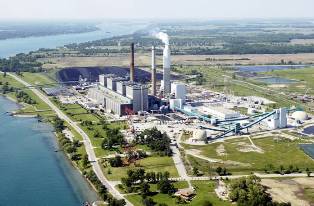|
AEIO Energy education
for Photograph
of Lambton Generating Station copyright (c) |
 |
Advanced Energy Innovations OntarioHVAC COURSE FOR CORPORATE CLIENTSIntroduction AEIO provides a professional development course on heating, ventilating and air conditioning (HVAC). The applied approach focuses on how HVAC systems work and how they can be made more cost- and energy-efficient. The logical stepwise approaches to analyzing HVAC problems are illustrated with detailed examples. The course developer and presenter, Thomas Simko, PhD, PEng, has received nine university teaching awards. This practical course is designed for engineers and technologists with no background in HVAC, or for those looking to refresh or update their understanding of the topic. All of the necessary basic concepts, tailored for the experience of the audience, are introduced at the start of the course. This course has been delivered to mechanical and civil engineers and professionals from the building industry. Benefits
Topics The available topics are listed below. We will customize the course according to the needs and interests of your company.
Course Delivery Dr. Simko delivers the course at your company in a three- or four-day format, depending on your preference. The longer version is more comprehensive with more topics and worked examples. There is no limit to the class size, but ten to twenty students is ideal. The course materials can also be delivered by your company in-house on a licensed basis. Deliverables
There is also an optional course project: an energy use simulation for a large building using a freely available software package. Permission has been obtained to use the fluid properties in this course. The following textbook has been adopted for this course and is a required purchase for students: McQuiston, F., Parker, J, Spitler, J. Heating, Ventilating, and Air Conditioning, 6th Ed., John Wiley & Sons, Inc., 2005. Contact Please contact us to discuss how we can customize and schedule this course to meet the needs of your company.
|